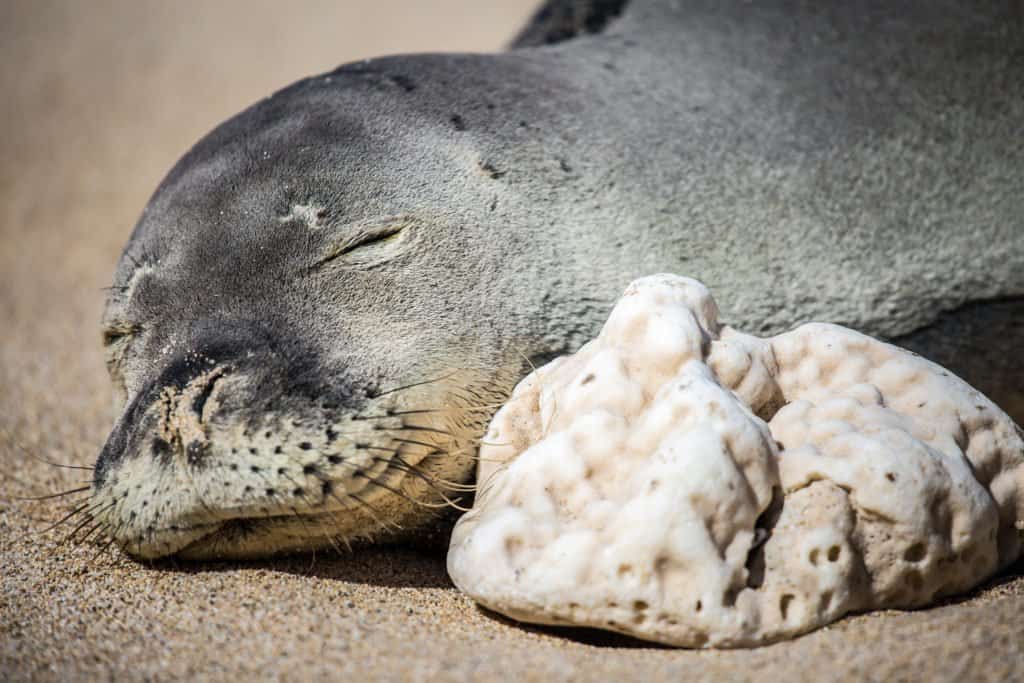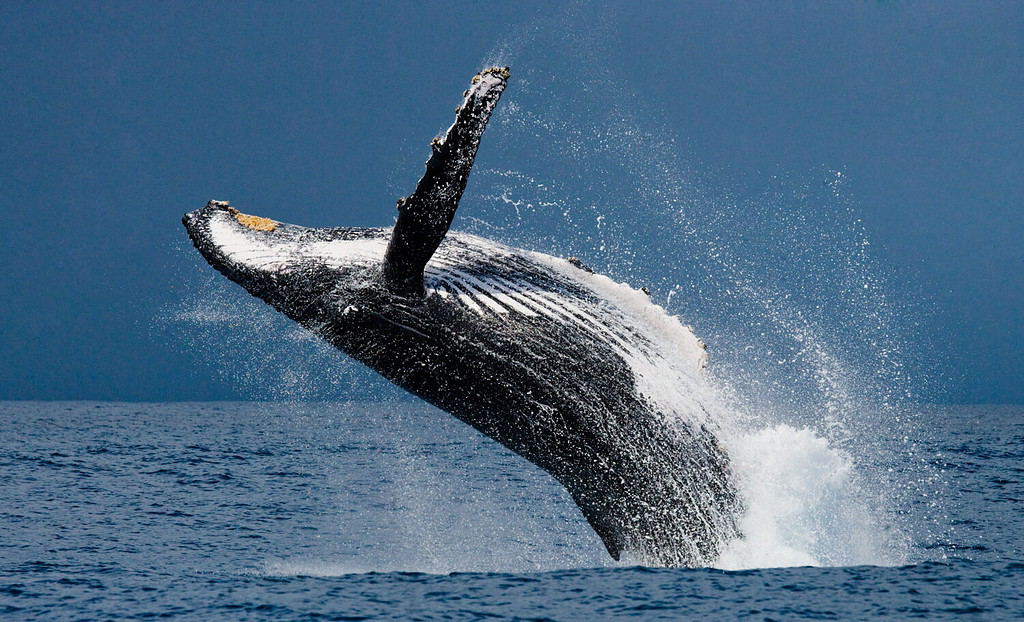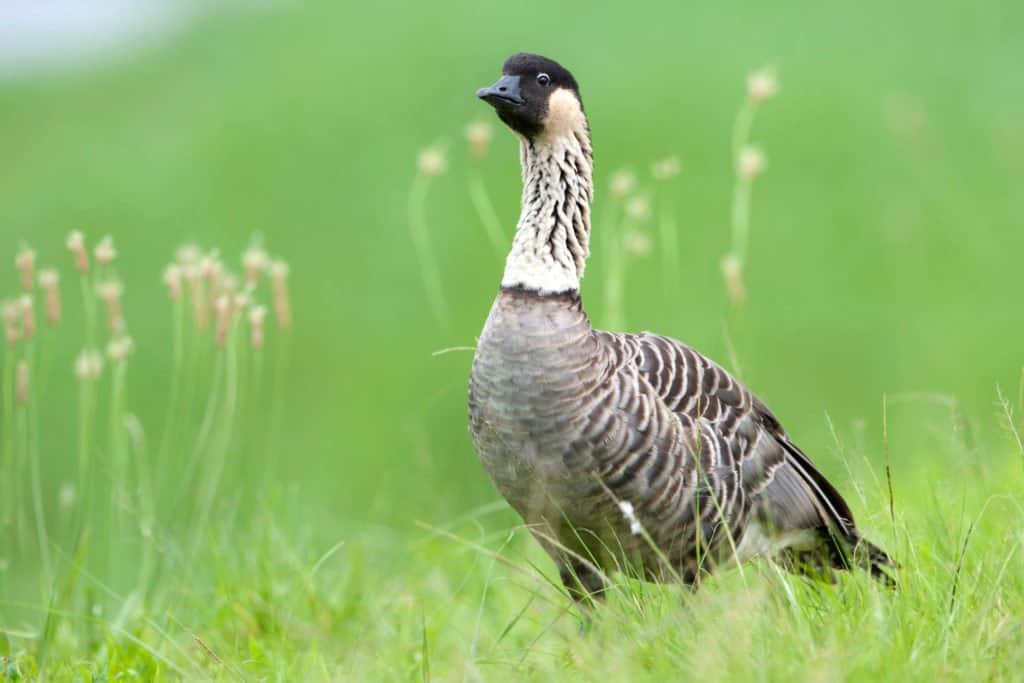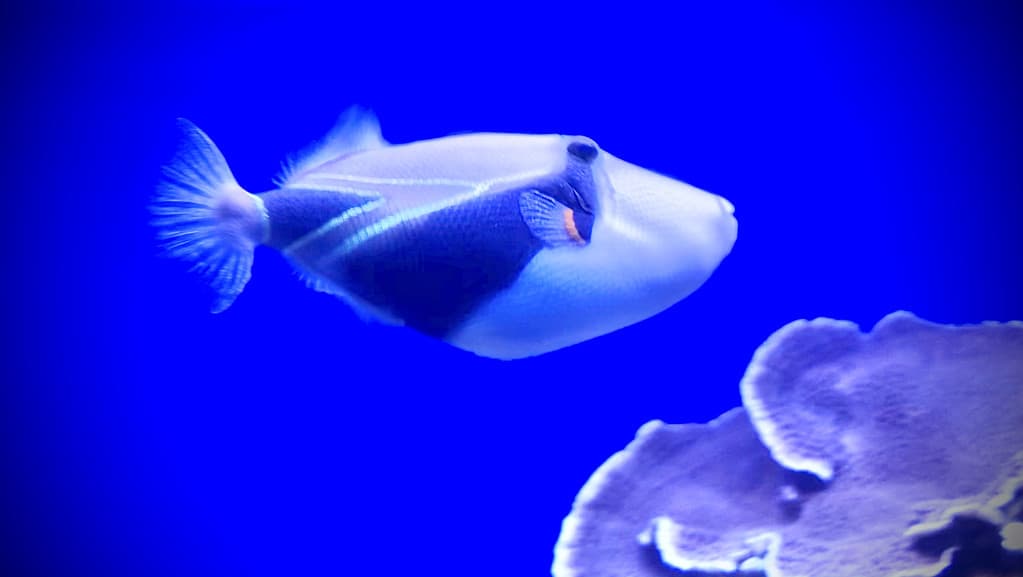A treasure trove of stunning natural wonders, Hawaii offers an incredible kaleidoscope of vibrant colors, amazing wildlife, and picturesque landscapes. From its lush green rainforests to its majestic volcanoes and smooth sandy beaches, this tropical paradise is teeming with magic and wonder. In this article, we take a closer look at Hawaii’s official state animals and how exquisitely they reflect the islands’ rich culture and beautiful biodiversity.

1. State Mammal: ʻĪlioholoikauaua or Hawaiian Monk Seal

Hawaiian monk seals often bask on volcanic rock and sandy shores along the islands.
©Evan Austen/Shutterstock.com
The Hawaiian monk seal (Neomonachus schauinslandi) is one of just two mammal species endemic to the Hawaiian Islands. That means that Hawaii is the only place on earth where it lives! Its Hawaiian name, “ʻĪlioholoikauaua”, means “dog that runs in rough water”, reflecting their adorably puppy-like nature. It became the official state mammal of Hawaii in 2008. Hawaiian monk seals have slender bodies that grow 7 to 8 feet long and weigh 300 to 600 pounds.
However, Hawaiian monk seals are also an endangered species. There are only around 1,400 Hawaiian monk seals left in the wild, due to a brutal past of hunting for their skins. They also face many current threats like human encroachment, disease, marine debris and pollution, very low levels of genetic variation, and entanglement in fishing nets. Their main population lives on the northwest Hawaiian Islands. There is also a smaller group that lives on the main islands.
2. State Marine Mammal: Koholā or Humpback Whale

Humpback whales migrate to Hawaii’s tropical waters of the state to breed and give birth.
©GUDKOV ANDREY/Shutterstock.com
Designated in 1979, the official state marine mammal of Hawaii is the humpback whale (Megaptera novaeangliae). They are important in Hawaiian culture as spiritual protectors and sometimes physical manifestations of the god of the ocean. Unfortunately, humpback whales were on the brink of extinction several decades ago due to hunting. Today they are slowly recovering, but still face many dangers like orcas, noise pollution, collisions with ships, entanglement in fishing gear, and climate change.
Humpback wheels are popular in whale watching. They are very active at the ocean’s surface, often breaching and performing aerial behaviors. They have distinct body shapes, long pectoral fins, and unique bumps called tubercles on their heads and parts of their flippers. Humpback whales are large animals, growing 46 to 50 feet long and weighing up to 44 tons. Despite their enormous size, however, they mostly eat small fish and krill.
3. State Land Mammal: Ōpeʻapeʻa or Hawaiian Hoary Bat

The second of the two mammals endemic to the Hawaiian Islands is the Hawaiian hoary bat (Lasiurus cinereus semotus). Hawaiian hoary bats live in many different habitats, but they often spend time near human settlements. They primarily hunt moths, which are attracted to the many lights generated by humans. Designated as the official land mammal of Hawaii in 2015, these adorable little creatures are endangered under the Endangered Species Act (ESA).
Hawaiian hoary bats are solitary animals who prefer to live alone, unlike other species that roost in colonies. Their Hawaiian name, “Ōpeʻapeʻa”, comes from the unique shape of their bodies. Their profile or outline resembles half of a taro leaf. They are also called “hoary” bats due to the frosted coloring on their otherwise brown fur (hoary is a grayish-white color).
4. State Bird: Nēnē or Hawaiian Goose

Hawaiian geese live in grasslands, shrublands, coastal dunes, lava planes, pastures, and even golf courses.
©Agami Photo Agency/Shutterstock.com
Found only on the islands of Hawai‘i, Kaua‘i, Moloka‘i, Maui, and O‘ahu, the Hawaiian goose (Branta sandvicensis) is a beautiful bird endemic to the Hawaiian Islands. It became the official state bird in 1957, and its Hawaiian name refers to its soft call. Although they are skilled flyers, they typically spend most of their time on the ground. They were once plentiful in Hawaii, but today Hawaiian geese are the rarest goose species in the world, with only 3,000 to 4,000 left.
Hawaiian geese are relatively large, growing about 16 inches tall and weighing 3.36 to 6.72 pounds on average. They have black feathers on their faces, the top of their heads, and down the back of their necks. This is beautifully contrasted by the buff or cream feathers coating their cheeks and the front of their long, slender necks.
5. State Fish: Humuhumunukunukuāpuaʻa or Reef Triggerfish

The humuhumunukunukuāpuaʻa or reef triggerfish is very territorial.
©samuel howell/iStock via Getty Images
The humuhumunukunukuāpuaʻa or reef triggerfish (Rhinecanthus rectangulus) was originally designated as the official state fish of Hawaii in 1985. It is a very important symbol in Hawaiian culture, often associated with the demigod Kamapua’a who could transform himself into a pig. The reef triggerfish has a small mouth and “pig-like” snout on the end of its large head. In fact, its Hawaiian name, “humuhumunukunukuāpuaʻa”, means “triggerfish with a pig-like snout”. In addition, when it tries to swim away from danger, reef triggerfish also makes grunting sounds like a pig!
Reef triggerfish grow to be about 12 inches long. They have vibrant colors that can rapidly change depending on how they feel. They are beautiful fish that are solitary and can be aggressive. Although it is not common, reef triggerfish have attacked and bitten the ankles of people swimming in their territories.
6. State Insect: Pulelehua or Kamehameha Butterfly

Caterpillars of the Kamehameha
butterfly
have long protective spines along their bodies.
©Forest & Kim Starr, CC BY 3.0 US <https://creativecommons.org/licenses/by/3.0/us/deed.en>, via Wikimedia Commons – Original / License
The official state insect of Hawaii is the Kamehameha butterfly (Vanessa tameamea). It became Hawaii’s official state insect in 2009 after a group of fifth graders from Pearl Ridge Elementary School proposed it as part of a project. The Kamehameha butterfly is one of only two butterfly species endemic to Hawaii. It lives on the Big Island, Oʻahu, Maui, Kauaʻi, and Lānaʻi. Unfortunately, it is also a vulnerable species, threatened by habitat loss, non-native species predation, and the decline of its host plants.
Its Hawaiian name, “Pulelehua”, means “reddish or rainbow colored” and “to float”, which refers to its beautifully patterned wings with rich reddish-orange and dark hues. Its common name, the “Kamehameha butterfly”, comes from the Royal House of Kamehameha, a dynasty that once ruled the Kingdom of Hawai’i.
Summary of the Official State Animals of Hawaii
| Title | Hawaiian Name | Common Name | Scientific Name |
|---|---|---|---|
| State Mammal | ʻĪlioholoikauaua | Hawaiian Monk Seal | Neomonachus schauinslandi |
| State Marine Mammal | Koholā | Humpback Whale | Megaptera novaeangliae |
| State Land Mammal | Ōpeʻapeʻa | Hawaiian Hoary Bat | Lasiurus cinereus semotus |
| State Bird | Nēnē | Hawaiian Goose | Branta sandvicensis |
| State Fish | Humuhumunukunukuāpuaʻa | Reef Triggerfish | Rhinecanthus rectangulus |
| State Insect | Pulelehua | Kamehameha Butterfly | Vanessa tameamea |
Thank you for reading! Have some feedback for us? Contact the AZ Animals editorial team.








